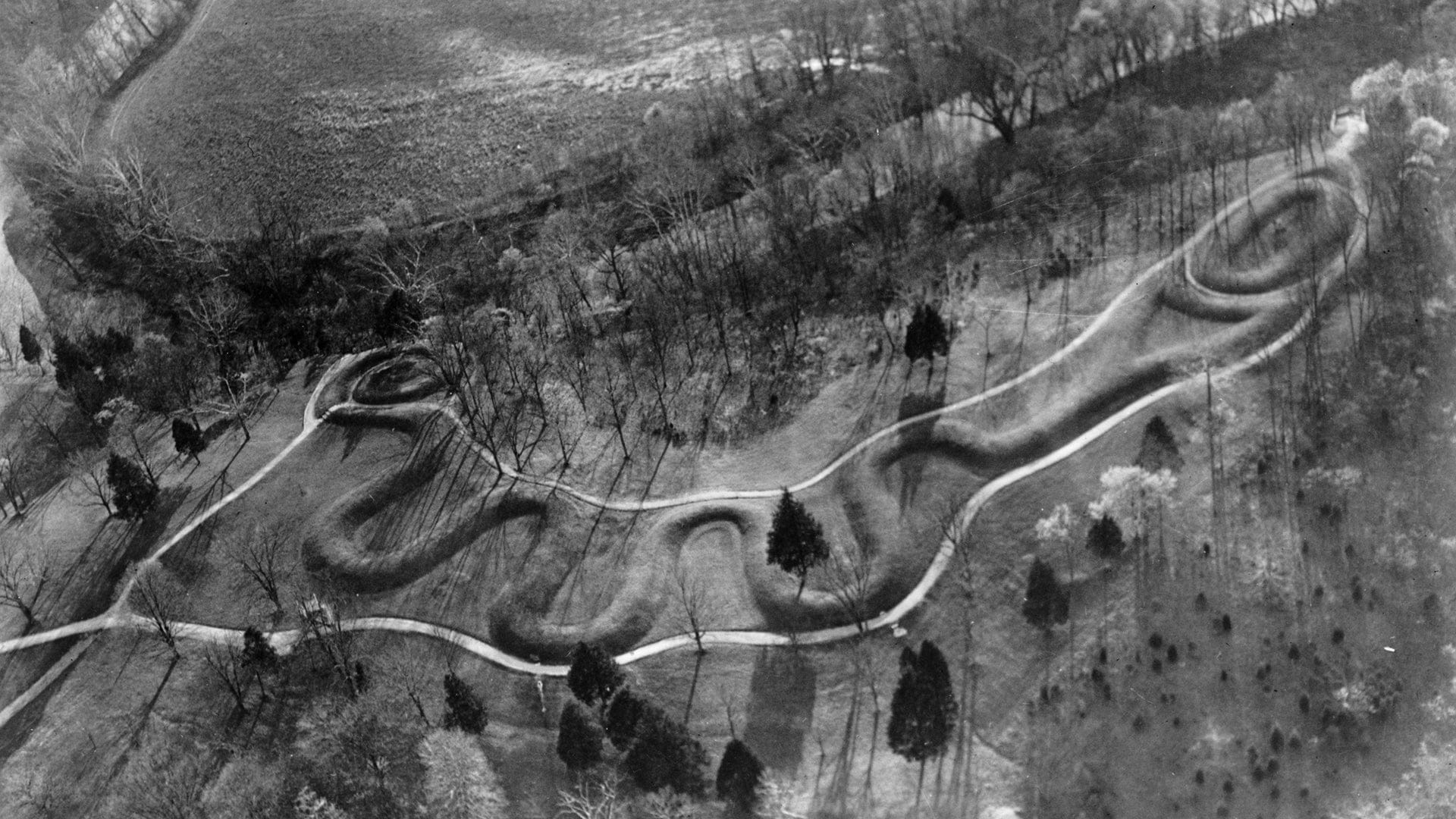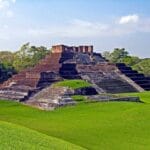The Enigmatic Serpent: A Journey Through Time and Mystery
Get ready to be mesmerized by Serpent Mound photos. These captivating images offer a glimpse into the past, showcasing a colossal and enigmatic creation built by ancient hands. Picture a massive serpent, longer than three football fields, etched into the landscape—that’s Serpent Mound, a testament to the ingenuity and spiritual beliefs of a civilization long gone.
But these photos are more than just stunning visuals; they weave a tapestry of the Adena people, who inhabited this region over a millennium ago. Renowned for their remarkable earthworks, the Adena left behind a legacy shrouded in mystery, with Serpent Mound standing as their most enigmatic creation. Looking at these images, one can’t help but ponder the lives of the builders, their understanding of the cosmos, and the meaning they wove into the serpent’s form.
These images serve as pieces of a grand puzzle, helping historians and archaeologists piece together the story of Serpent Mound. Early sketches from the 1800s offer a glimpse into the mound’s appearance throughout time, while modern aerial photographs grant breathtaking perspectives of the entire effigy.
However, the ultimate question lingers: what was its purpose? Why did the Adena, or perhaps another culture, invest such effort in shaping the earth into this colossal serpent? Some speculate it aligns with celestial bodies, acting as a massive calendar tracking the solstices. Others believe it embodies a powerful spirit or a tale woven into their mythology. While the definitive answer remains elusive, this only deepens Serpent Mound’s allure, sparking curiosity and inviting contemplation.
Fortunately, Serpent Mound continues to endure, and these photos breathe life into its story. They serve as tangible connections to the enigmas of the past, inspiring us to delve deeper into the lives and beliefs of those who came before us. So, immerse yourself in these images, let your imagination soar, and perhaps you’ll uncover a piece of the puzzle that is Serpent Mound.
Deciphering the Serpent’s Secrets: Who Built It and Why?
The sheer majesty of Serpent Mound is undeniable, but the questions surrounding its creators and purpose continue to intrigue archaeologists and historians alike. While definitive answers remain elusive, let’s explore the prevailing theories and delve into the heart of this enduring mystery.
The Adena Connection:
Archaeologists have long associated Serpent Mound with the Adena culture, who flourished in the Ohio Valley between 800 BC and 100 AD. Known for their impressive earthworks, often used for ceremonial or burial purposes, the Adena’s cultural footprint aligns with the mound’s location and estimated time of construction.
The Purposeful Serpent:
The serpent itself holds deep symbolism in many cultures, often representing fertility, transformation, and cyclical renewal. This has led some experts to believe Serpent Mound served a ceremonial or religious purpose, possibly as a place of ritual gatherings, spiritual offerings, or a symbolic representation of a powerful deity.
Aligning with the Cosmos:
The mound’s unique alignment with celestial events further fuels speculation. During the summer solstice, the serpent’s head aligns perfectly with the setting sun, while its tail points towards the rising sun on the winter solstice. This precise orientation suggests the Adena, known for their astronomical knowledge, may have used the mound as a massive celestial calendar, tracking the solstices and equinoxes to guide their agricultural practices and spiritual observances.
Unveiling the Mystery:
While we may never know the exact intentions of Serpent Mound’s builders, its scale, symbolism, and celestial alignments offer tantalizing clues. Perhaps it served a multitude of purposes—a sacred site for ceremonies, a testament to their cosmological understanding, or a symbolic representation of their beliefs and connection to the natural world. As research continues and new technologies emerge, we inch closer to unraveling the secrets held within Serpent Mound’s earthen coils.
Mysteries Beneath the Surface: What Lies Buried Within Serpent Mound?
The visible grandeur of Serpent Mound is captivating, but its subterranean secrets remain largely unexplored. Unlike many Native American effigy mounds, which often serve as burial grounds or repositories for sacred objects, excavations at Serpent Mound have yielded a surprising discovery—an absence of human remains or artifacts within its earthen form.
A Ceremonial Space?
This lack of traditional burial offerings has led experts to consider alternative interpretations. One prevailing theory suggests that Serpent Mound was primarily a ceremonial site—a place where ancient peoples gathered to perform rituals, honor their ancestors, or connect with the spiritual realm. The serpent’s sinuous form, often associated with the underworld and the cyclical nature of life and death, lends credence to this hypothesis.
Celestial Calendar and Observatory?
Furthermore, the mound’s precise alignment with the solstices and its possible correlation with the Draco constellation suggest a profound understanding of celestial events. This has fueled speculation that Serpent Mound served as a massive astronomical calendar or observatory, allowing the ancients to track the seasons, predict eclipses, and deepen their connection to the cosmos.
Further Exploration Needed:
Despite decades of study, the true purpose of Serpent Mound remains shrouded in mystery. The absence of internal artifacts only deepens the intrigue, challenging archaeologists and historians to reconsider traditional interpretations of effigy mounds. Future research, potentially employing non-invasive techniques like ground-penetrating radar, may reveal further clues without disturbing the mound’s delicate structure.
Unveiling the Serpent’s Secrets: Why is the Serpent Mound Closed?
It’s undoubtedly disappointing to arrive at Serpent Mound, eager to walk its ancient contours, only to be met with closed gates. While frustrating, there are often important reasons behind such closures, prioritizing the preservation of this historical treasure and the safety of its visitors.
Preservation and Maintenance:
Historical sites like Serpent Mound require regular maintenance to withstand the test of time. Exposure to the elements, erosion, and even foot traffic can take a toll on these delicate structures. Closures often allow experts to conduct essential repairs, ensuring the mound’s structural integrity for future generations.
Ongoing Research and Archaeological Investigations:
Serpent Mound continues to be a source of fascination for archaeologists. Closures may provide opportunities to conduct non-invasive surveys, such as ground-penetrating radar, to glean further insights into the mound’s construction and purpose without disturbing its form.
Visitor Safety and Site Management:
Ensuring a safe and enjoyable experience for visitors is paramount. Closures might be implemented to address safety concerns, improve accessibility, or manage visitor impact on the site, particularly during peak seasons.
Connecting Closure to the Mysteries:
The reasons behind Serpent Mound’s closure, while seemingly mundane, often tie back to the very mysteries that make it so captivating. Each closure presents a chance to learn more, to preserve its legacy, and to ensure that this ancient marvel continues to inspire awe and wonder for generations to come.
Exploring Further:
Do you know which civilization was the first to practice monotheism? Click the link to find out: what civilization was the first to practice monotheism
Who were the Nataruk and where did they settle? Find out by clicking the link: nataruk were they settled
We have many interesting details about the Viking King Burghred. Click here to know more about him.
Key Points to Remember:
- Ancient Marvel: Serpent Mound is a 1,348-foot-long prehistoric effigy mound in the shape of a snake, located in Peebles, Ohio.
- Cultural Significance: It’s the world’s largest surviving effigy mound, designated as a National Historic Landmark, and stands as a testament to the ingenuity of ancient cultures.
- Mysterious Origins: While often attributed to the Adena culture (800 B.C. to 100 AD), recent evidence suggests the Fort Ancient culture (1000 AD to 1650 AD) might be responsible for its construction.
- Purpose Remains Unknown: Despite extensive research, the exact purpose of Serpent Mound is still a mystery. Theories range from ceremonial sites to astronomical calendars.
- No Internal Burials: Unlike many other effigy mounds, Serpent Mound does not appear to contain any human remains or artifacts within its structure.
- Celestial Alignments: The mound’s alignment with the summer and winter solstices, as well as its possible correlation with the Draco constellation, suggests a strong connection to astronomical observations.
- Preservation is Key: Closures at Serpent Mound, while disappointing to visitors, are often implemented to facilitate essential maintenance, research, or to ensure public safety.
- Crypto Quotes’ Red Flags: Avoid Costly Mistakes - June 30, 2025
- Unlock Inspirational Crypto Quotes: Future Predictions - June 30, 2025
- Famous Bitcoin Quotes: A Deep Dive into Crypto’s History - June 30, 2025
















